ADVENT Sunday in Český Krumlov and the bells are ringing. The first sighting of blue sky in this most misty of autumns in South Bohemia has lured me out into the old town before breakfast. Winding alleys that had breathed mystery after dark are equally entrancing by day. Who needs Prague when you can have a place like this to yourself?
Menfolk itching to get away and blast the life out of all the stags they can bag
Except around the corner comes a selfie-driven Japanese coach pack. UNESCO World Heritage status means off the beaten track just doesn’t happen these days. Still this historic city, set in a horseshoe bend of the River Vltava (Moldau) and lorded over by an immense 13th century castle, wears its tourist honeypot trappings lightly.
We are 170km south of the Czech capital, not far from the Austrian border. This has been territory fought over for centuries. When Germans ruled the roost it was called Krummau an der Moldau just as the region’s main centre, České Budějovice, was Budweis (hence the brewery name, more of which anon).
After the collapse of the Soviet empire and the splitting up of the Czech Republic and Slovakia Český Krumlov arose from decades of decay like some Sleeping Beauty. Which seems quite apt in a land entwined in folklore and fairytale.

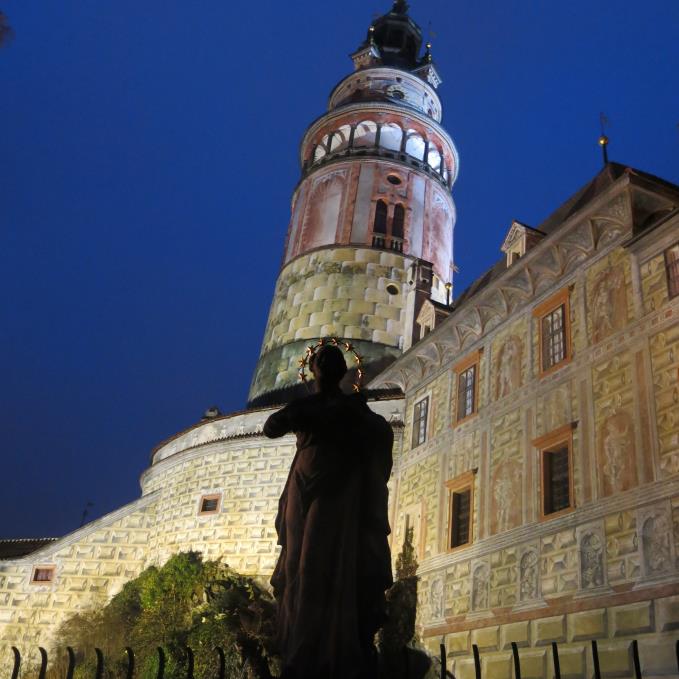

Especially around Christmas when it all takes off. Well, Flying Baby Jesus does. When the Velvet Revolution kicked out Communism there was a rush to introduce Czechs to that burly guy in red with the white beard. They were having none of it. Their festive bringer of gifts is Ježíšek, variously depicted as a baby, toddler, and young lad (see the image below from a church we visited).
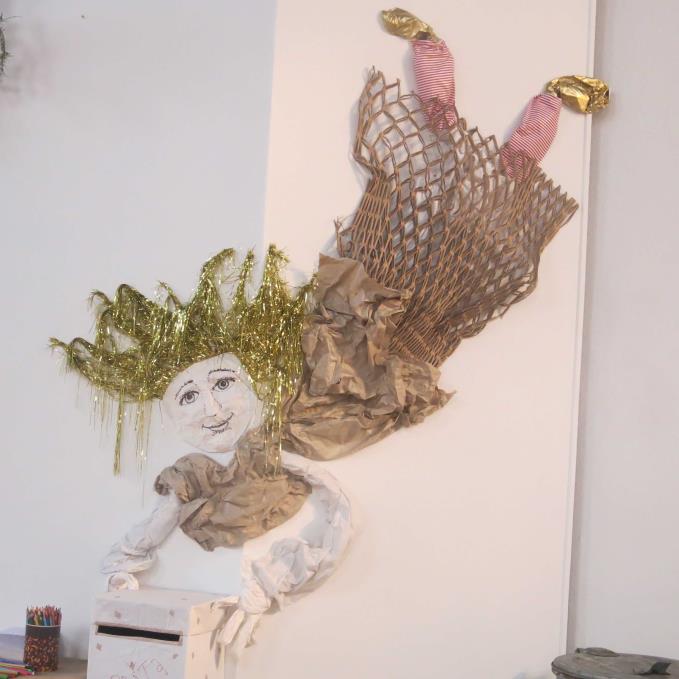
On Christmas Eve families deck the tree and share a traditional Czech dinner of carp and potato salad, then the children are sent to scan the skies for Ježíšek. When a bell rings they rush back to find their presents have arrived.
Snacking at the Christmas Markets
The Czechs have the highest beer consumption in the world – 143 litres a head. Their food, from pretzels to goulasch via dumplings, sauerkraut, grilled meats and sausages, seems custom-built to match the foaming brews.
We were there at Christmas Markets time, more home-made affairs than the ersatz ones inflicted on the UK every November and December. (Stray from Piccadilly Travelodge, where I handily stayed on the eve of my early flight to Prague, and there ere 350 market stalls within 10 minutes’ walk.)
In both Český Krumlov and České Budějovice, in a gently festive atmosphere, we sampled these Czech snacks for the first time:
 Carp fries – a new delicacy in this traveller's life
Carp fries – a new delicacy in this traveller's lifeTrdelnik: a hybrid of cake and sweet pastry made from rolled dough that is wrapped around a stick, then grilled and topped with a sugar and spice mix.
Sazanka: a thin omelette on rye with gherkins and browned spring onions.
Kapri Hranolky: carp fries, the fish chunks spiced with cumin and ginger then floured and deep-fried. Delicious with a noggin of mulled mead, but I opted for a bottle of Krumlov’s own local beer, Eggenberg. Na zdraví (cheers)!
My best present this year was discovering the unanticipated wonders of Český Krumlov. After being captivated by the view from the Castle of its close clustered rooftops encircled by the river came the defining focus of the stay: the Fairytale House – Puppet Museum.
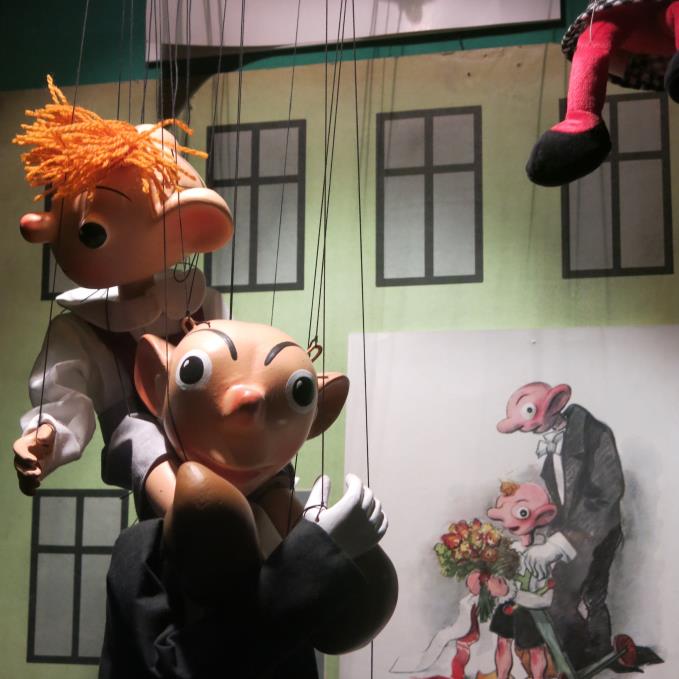


Here you can learn about contemporary puppeteering, even try your hand, but it is the marionette mausoleum aspect – some dating back to the 18th century – that makes this an essential visit. Check out eerie tableaux of the sprites, witches and demons that populate Czech childhoods. None more creepy than the water spirit ”vodník”. This green man riding a catfish drowns unwary folk and captures their souls in a jar.

Then there is a puppet effigy of the White Lady who haunts the Castle and makes appearances in the nearby Hotel Růže. If the spirit is smiling, good news will follow; if she looks serious, and wears or carries black gloves, the news will be bad. Legend has it she threw herself off a cliff when her father refused to allow her to marry the man she loved.
Another Krumlov story, much more horrific, featured deranged Don Julius, bastard son of the Hapsburg Emperor Rudolf II. When he took up residence in the Castle in 1607 he was joined by the local barber’s daughter, Markéta Pichlerová, with her family’s permission.
Tiring of her, he beat her up and threw her from a turret window – she escaped death only because a rubbish heap broke her fall. After she recovered from terrible injuries, the tyrant demanded her back – and then cut her into tiny pieces. In subsequent captivity in the Castle he degenerated into a human wreck and was probably murdered on the Emperor’s orders.
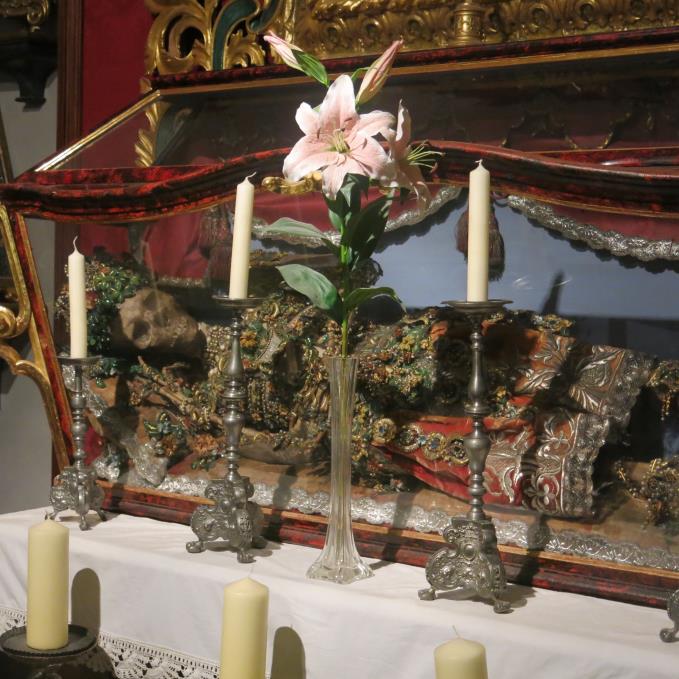
A dark past but visiting the Castle these days is a jolly experience. The exuberant Baroque theatre is only open for occasional concerts and the two resident bears penned below the battlements are coy about showing themselves, but the 29 room Museum in the colourful tower is equally colourful and eccentric. Don’t miss the reliquary of St Reparatus (above), his bones gaudily embellished by nuns.
Just as near the knuckle is some of the raw, explicit imagery inside the Egon Schiele Art Centrum. The Austrian painter died in the Spanish flu epidemic, at just 28, in 1918, the same year as his inspirational mentor, Gustav Klimt. This gallery in a former brewery exists because Schiele’s mother came from the town and he spent time here, enraptured by the Bohemian forests, before being driven out because of his bohemian (as in unorthodox) lifestyle. This is charted in exemplary fashion alongside changing exhibitions of current artists.
 Seidel Museum offers snapshots of Český Krumlov's past
Seidel Museum offers snapshots of Český Krumlov's pastThe Museum Fotoatelier Seidel is an altogether sedater affair. This recently reopened house/studio of early 20th century photographic pioneer Josef Seidel is a time warp with its abundance of original cameras and props. He was a chronicler of a pre-war, pre-Soviet age and the images are fascinating.
All these attractions are within close walking distance. The best passport to seeing them is the Český Krumlov Card, covering five museums and the Krumlov monastery complex. For a single adult it costs under a tenner, in line with prices for food, drink and accommodation that make a visit to the Czech Republic so affordable.
Take cocktails. Where in the UK can you buy a Negroni or an Old Fashioned for under a fiver? You can at Český Krumlov’s specialist Apoteka bar in the Castle’s former Apothecary Shop (the Alchemists’ lab was just across the city’s main drag, Latrán). Beer is similarly half the price, though the choice is usually lager or lager.
Bobsleighing and treetop trotting
SOUTH Bohemia is primarily rural, rolling hills with farms, forest and fishponds (that’s where the carp comes from). It would be wrong to visit and not take advantage of great walking and cycling opportunities – especially after all those dumplings and Budvars. On a tight schedule we took a spin out to Lipno, an all year round leisure resort in the Šumava Mountains overlooking the largest dammed lake in the Czech Republic.
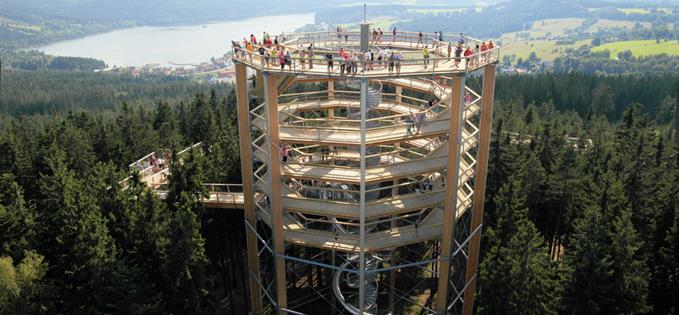
The first snow of the winter hinted the ski season wouldn’t be far away – visitors were getting in the wintry mood by braving the two bobsleigh runs, one traditional and icily taxing, the other more entry level, akin to a rollercoaster. We tackled Lipno’s 675 metre long barrier-free Treetop Path, ascending its 40 metre high observation tower with its view to die for. Great, easy fun and child-friendly educational, but vertigo sufferers look away now.
That may be about to change in Hluboká nad Vlatou, one of the must-do day trips out of Český Krumlov. Here the cafe owners are banding together to create their own brewery, the first there for 130 years, brewing Czech staples but also chancing IPAs and other craft styles.
 At Solidní Šance the staff like to look the part
At Solidní Šance the staff like to look the partSomething to wash down the speciality of the village’s characterful restaurant, Solidní Šance – potato pancakes stuffed with cabbage and pork. The house strudel is benchmark stuff, too.
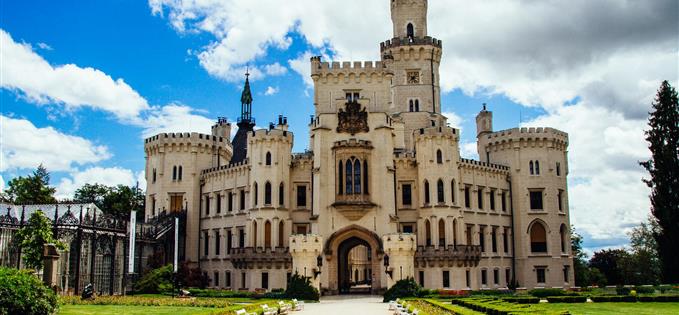 Hluboká Castle is modelled on Windsor Castle
Hluboká Castle is modelled on Windsor CastleThe real reason to visit (unless you are hoping to catch a glimpse of local celeb, Karel Poborský, once of Manchester United) is 13th century Hluboká Castle, transformed into its current Neo-Gothic Windsor look in the 19th century by the Schwarzenberg family. They had downsized from Český Krumlov Castle to this 11 tower, 140 room, glorified ‘hunting lodge’.
 Over the top Hluboká is a homage to hunting weekends of a bygone era
Over the top Hluboká is a homage to hunting weekends of a bygone era


In the hall the Schwarzenbergs pose en masse in a family photograph of the time, the menfolk itching to get away and blast the life out of all the stags they can bag. You can’t move for trophy antlers and gun racks throughout the public rooms, only the odd manic boar’s head breaking the plush monotony.
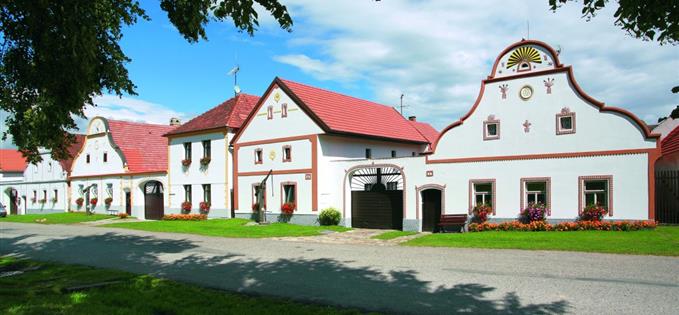 Holašovice has an astonishing uniformity of style and, below, a guardian of its farming heritage
Holašovice has an astonishing uniformity of style and, below, a guardian of its farming heritage
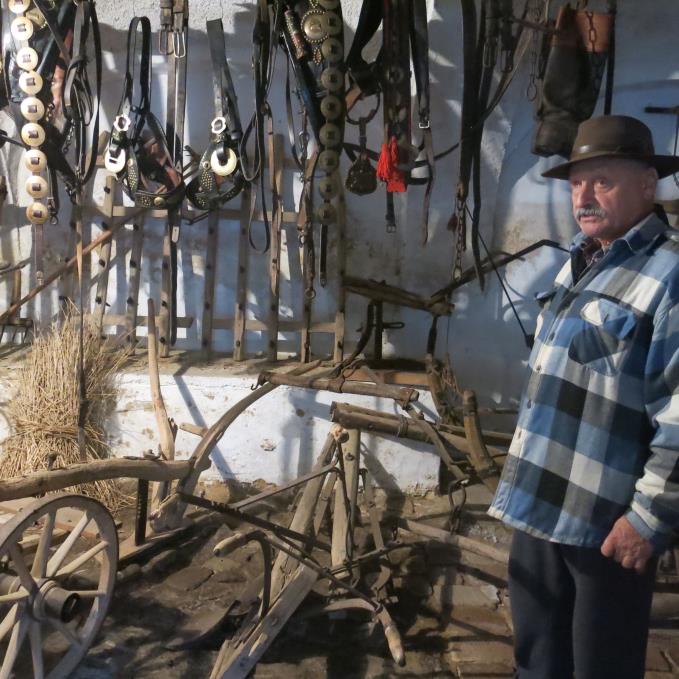
There was a uniformity, too, to our second stop, another UNESCO gem, the model village of Holašovice. Ranked around a village green are several dozen houses refashioned in the 19th century in the ‘Folk Baroque’ style aping noble mansions. Think lacy, colourful gables.
I’m told the number of houses has remained constant throughout Holašovice’s 800 years of existence and most are still lived in by villagers. Two taverns, a chapel and a blacksmith are here to serve them, and No.6 of the 17 farms in the village offers a fascinating collection of bygone rural tackle. Thought-provoking indeed our lugubrious guide’s demo (without animal) of how to castrate a sheep.

But then the whole trip was full of quirky revelations. The main purpose of our visit to České Budějovice, 25km north of Český Krumlov, was to visit its world famous Budweiser Budvar Brewery but on a guided tour around the town every building seemed to boast an odd back story. Climb the 250 steps to the top of the Italianate Gothic-Renaissance Black Tower (1577) and you are rewarded with a spectacular view over Budějovice’s vast main square and the Blanský Forest in the distance. The abiding memory, though, is of the goat who once shared the tower apartment with the guardian.
 Salt Warehouse; below, one of the imprinted faces that earn it a second glance
Salt Warehouse; below, one of the imprinted faces that earn it a second glance

Walk over to Piarist Square. On one side is the steeply gabled Salt Warehouse, once an armoury, today a motorcycle museum. Inset randomly in the facade are three reliefs of stone faces, believed to represent a trio of thieves beheaded.
On the other side, high on the exterior of the Church of the Sacrifice of Our Lady, a frog-like gargoyle bulges just below the roof. It recreates a frog crawled into the foundations of the Dominican church during construction and kept causing the church walls to crumble; in the end, it was ejected from the foundations.

It is said that its sculpture used to be placed lower, but the stone frog has been crawling upwards step by step until it reaches the roof and then the church will collapse and it will be the end of the world.
An equivalent doom will arrive when the vast underground lake that supplies the perfect, pure soft water for making Budvar beer runs out. It’s not going to happen any time soon but it’s a nagging long-term quandary for the state-owned brewery that upholds the country’s beer traditions, lagering (slow conditioning) its top-fermented, burnished gold beer for 90 days in comparison with just 25 for arch-rival corporate-owned Pilsener Urquell in the northern town of Plzeň, where the classic beer style was created.
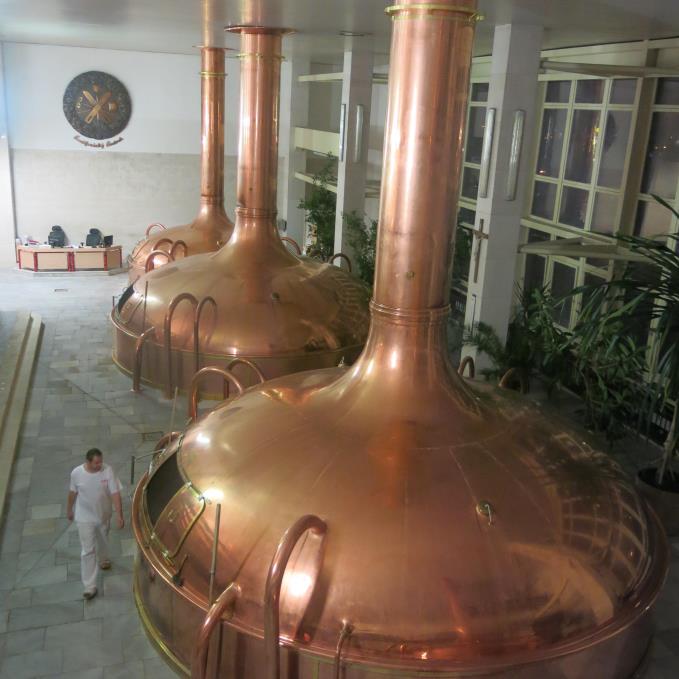
Budvar are meticulous, too, in sourcing locally only pale Moravian malt and Saaz whole hops (not the pellets used by most brewers, even the of the artisan craft persuasion). It was a glorious sight (below} watching one of the brewing team load the hops into one of the gleaming copper vessels.

At the end of our Budvar Visitor Centre Tour we tasted the end product in the cellar. Patiently conditioned and unpasteurised, lacily frothy fresh from the tanks, it lived up to Garrett Oliver’s tasting note in his magisterial Oxford Companion to Beer: “Refreshing, showing a rich malt and vanilla aroma, and fine, floral hop character. The finish has a fine balance of juicy malt, tangy hop resins, and a delicate hint of apple fruit.” Quite.
Oliver touches at length on the decades-long legal wrangling over naming rights with the US brewing giants Anheuser-Busch, who produce their own (vastly inferior) ‘Budweiser’ and Bud Lite. At the height of the squabble Budvar was saved from a takeover by them after the intervention of then president Vaclac Havel and today worldwide sales are soaring.
In the fairy tale land of Bohemia they like happy endings.
Factfile
Neil Sowerby flew to Prague from Manchester with jet2.com.
To catch the breakfast flight he stayed in Travelodge Piccadilly, 10 minutes’ walk from Piccadilly Station with its regular rail links to Manchester Airport. One of the budget chain’s freshly upgraded hotels, it features the king-sized Travelodge Dreamer Bed. To book at any of their 500 hotels visit this link.
In South Bohemia, a two and a half hour drive from Prague, he stayed at the Hotel Malý Pivovar, Karla IV. 8 - 10, 370 01 České Budějovice, +420 386 360 471 and at the Hotel Latrán, Latrán 74, 381 01 Český Krumlov, +420 380 602 440.
For full tourism information about the Czech republic visit here and here.
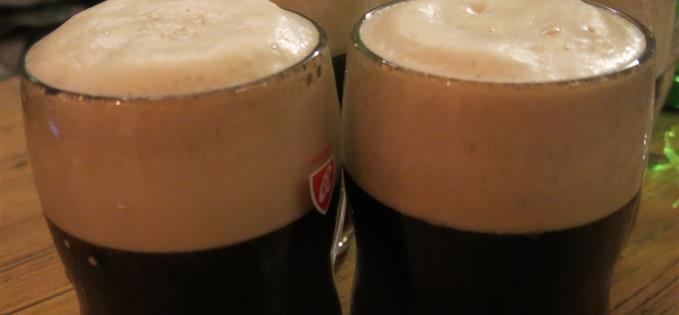 Budvar's dark lager, only introduced a few years ago, partners goulasch and dumplings well
Budvar's dark lager, only introduced a few years ago, partners goulasch and dumplings well
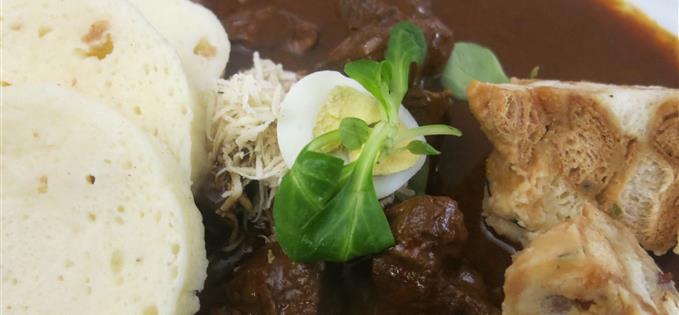 Goulasch
GoulaschBudějovický Budvar Brewery, n. p.K. Světlé 512/4 370 04 České Budějovice. To plan your (highly recommended) Brewery Tour visit here. Prices start at 120 CZK (about £4) and the tour includes a small glass of Budvar pale lager. Follow your tour with a meal at the Budvar Beerhouse 100 metres away on the corner of Pražská and K. Světlé streets. The rich, dry Budvar dark lager is a consummate match the the house speciality goulasch.
Lipni Treetop Walkway (Stezka, Korunami Stromů) s.r.o, Lipno nad Vltavou, PSČ 38278. Adult 200CZK (£7), toboggan 60 CZK (£2).
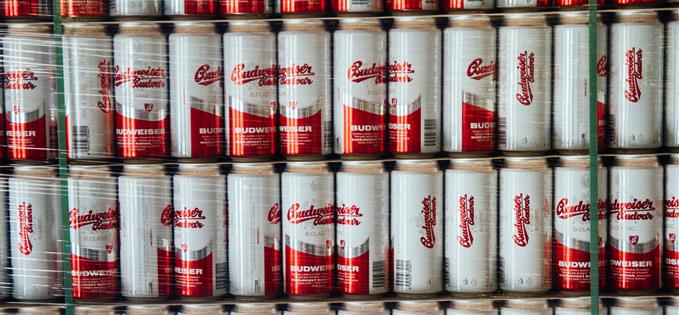
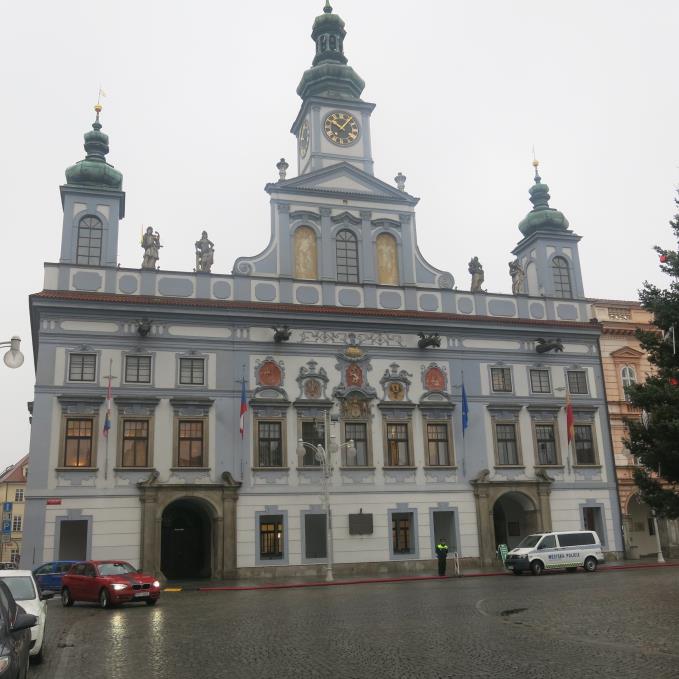 České Budějovice's town hall faces on to the city's immense main square where we bought sausages from the market
České Budějovice's town hall faces on to the city's immense main square where we bought sausages from the market

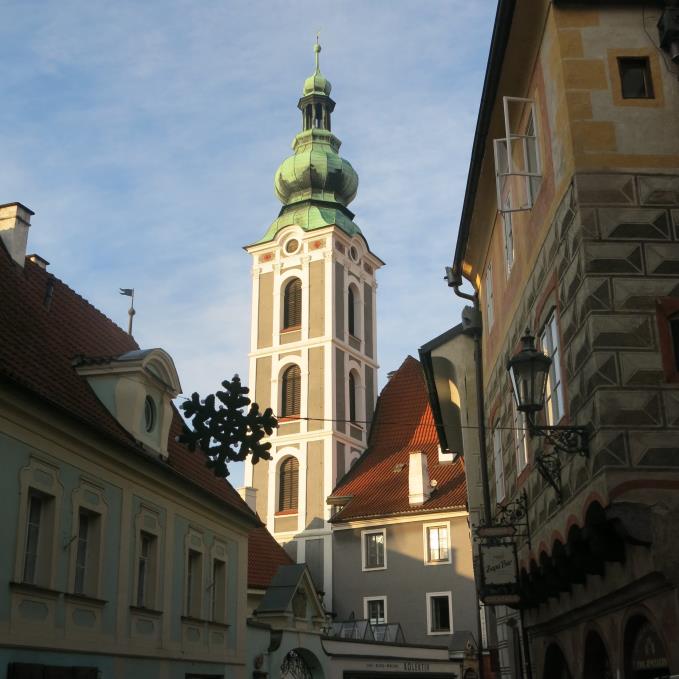 St Vitus' Church in Český Krumlov's old town, effectively an island
St Vitus' Church in Český Krumlov's old town, effectively an island
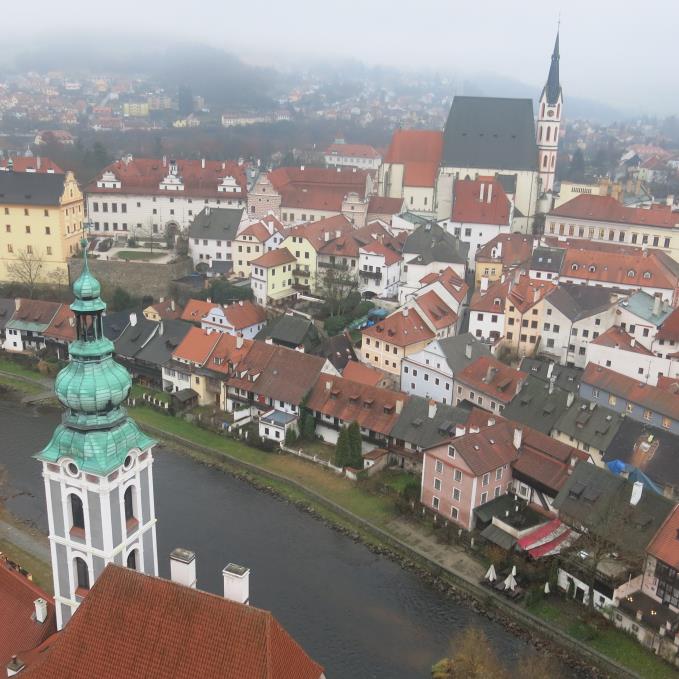
 Powered by Wakelet
Powered by Wakelet










